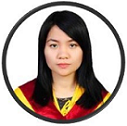Implementation of STEM-Oriented MEA learning model to improve computational thinking skills of learners
DOI:
https://doi.org/10.56003/jse.v4i2.289Keywords:
Learning, STEM-oriented MEA model, Computational Thinking (CT)Abstract
Low computational thinking skills cause students to have difficulty solving problems. This study aims to analyze whether there is an increase in students' CT abilities using the STEM-oriented MEA model with conventional learning. The research method is an experiment using an experimental group of 30 students and a control class of 32 students. The research instrument uses questionnaires and rubrics to assess students' CT abilities. The results of the T-test analysis used are Equal variances not assumed, which is 0.000 (Sig. (2-tailed)) > 0.05 means There is an increase in student's CT abilities using the STEM-oriented MEA model with conventional learning, so There is an increase in student's CT abilities using the STEM-oriented MEA model with conventional learning. Thus, there is an increase in the ability of students to think computationally using the STEM-oriented MEA model with conventional learning.
Downloads
References
Ansori, M. (2020). Penilaian Kemampuan Computational Thinking (Pemikiran Komputasi). SALIMIYA: Jurnal Studi Ilmu Keagamaan Islam, 1(2), 176-193. https://www.ejournal.iaifa.ac.id/index.php/salimiya/article/view/167
Capraro, R. M., Barroso, L. R., Nite, S., Rice, D., Lincoln, Y., Young, J., & Young, J. (2018). Developing a useful and integrative STEM disciplinary language. International Journal of Education in Mathematics, Science and Technology, 6(1), 1–11. https://doi.org/10.18404/ijemst.357646
Cahdriyana, R. A., & Richardo, R. (2020). Berpikir Komputasi Dalam Pembelajaran Matematika. LITERASI (Jurnal Ilmu Pendidikan), 11(1), 50. https://doi.org/10.21927/literasi.2020.11(1).50-56
Chen, L. C. (2018). DeepLab: Semantic Image Segmentation with Deep Convolutional Nets, Atrous Convolution, and Fully Connected CRFs. IEEE Transactions on Pattern Analysis and Machine Intelligence, 40(4), 834–848. https://doi.org/10.1109/TPAMI.2017.2699184
Fadhillah, M. R., Budiyanto, C. W., & Hatta, P. (2023, January). The influence of block-based programming to computational thinking skills: A systematic review. In AIP Conference Proceedings (Vol. 2540, No. 1). AIP Publishing. https://doi.org/10.1063/5.0105716
Guggemos, J. (2021). On the predictors of computational thinking and its growth at the high-school level. Computers & Education, 161, 104060.
Hasanah, U., & Haryadi, H. (2022). Pendampingan Mahasiswa Dalam Berpikir Secara Komputasi (Computational Thinking). Abdinesia: Jurnal Pengabdian Kepada Masyarakat, 2(1), 7-14. https://unu-ntb.e-journal.id/abdinesia/article/view/139
Jamna, N. D., Hamid, H., & Bakar, M. T. (2022). Analisis kemampuan berpikir komputasi matematis siswa smp pada materi persamaan kuadrat. Jurnal Pendidikan Guru Matematika, 2(3), 278-288. https://doi.org/10.33387/jpgm.v2i3.5149
Kamil, M. R. (2021). Analisis kemampuan berpikir komputasional matematis Siswa Kelas IX SMP Negeri 1 Cikampek pada materi pola bilangan. AKSIOMA: Jurnal Matematika dan Pendidikan Matematika, 12(2), 259-270. http://journal.upgris.ac.id/index.php/aksioma/article/view/8447
Khairudin, S. K., Widyastuti, R., & Setiawan, A. (2018). Interactive Multimedia Learning on the Basis of Problem Based Learning (PBL) for Vocational High School (VHS) Students. International Journal of Engineering & Technology, 7(4.28), 104-108.
Li, T. (2020). Federated Learning: Challenges, Methods, and Future Directions. IEEE Signal Processing Magazine, 37(3), 50–60. https://doi.org/10.1109/MSP.2020.2975749
Malik, R. S. (2018). Educational Challenges in 21St Century and Sustainable Development. Journal of Sustainable Development Education and Research, 2(1), 9-20. https://doi.org/10.17509/jsder.v2i1.12266
Nieveen, N., & Folmer, E. (2013). Educational design research educational design research. Netherlands Institute for Curriculum Development: SLO, 1-206.
Ramadhan, D. G., Budiyanto, C. W., & Yuana, R. A. (2023, January). The role of game-based learning in developing students computational thinking skills: A review of the literature. In AIP Conference Proceedings (Vol. 2540, No. 1). AIP Publishing. https://doi.org/10.1063/5.0105705
Reinking, A., & Martin, B. (2018). The gender gap in STEM fields: Theories, movements, and ideas to engage girls in STEM. Journal of New Approaches in Educational Research, 7(2), 148–153. https://doi.org/10.7821/naer.2018.7.271
Saputri, A. C., Sajidan, Rinanto, Y., Afandi, & Prasetyanti, N. M. (2019). Improving students’ critical thinking skills in cell-metabolism learning using Stimulating Higher Order Thinking Skills model. International Journal of Instruction, 12(1), 327–342. https://doi.org/10.29333/iji.2019.12122a
Sari, U., Alici, M., & Sen, Ö. F. (2018). The Effect of STEM Instruction on Attitude, Career Perception and Career Interest in a Problem-based Learning Environment and Student Opinions. Electronic Journal of Science Education, 22(1), 1–21. https://ejrsme.icrsme.com/article/view/17861
Selvaraju, R. R. (2020). Grad-CAM: Visual Explanations from Deep Networks via Gradient-Based Localization. International Journal of Computer Vision, 128(2), 336–359. https://doi.org/10.1007/s11263-019-01228-7
Setiawati, H., & Corebima, A. D. (2017). Empowering Critical Thinking Skills of The Students Having Different Academic Ability in Biology Learning of Senior High School through PQ4R - TPS Strategy. The International Journal of Social Sciences and Humanities Invention, 4(5), 3521–3526. https://doi.org/10.18535/ijsshi/v4i5.09
Supatmiwati, D., Suktiningsih, W., Anggrawan, A., & Katarina, K. (2021). Sosialisasi Computational Thinking Mata Pelajaran Bahasa Inggris untuk Guru-Guru MI dan MTs Wilayah Lombok Tengah. ADMA: Jurnal Pengabdian Dan Pemberdayaan Masyarakat, 2(1), 73–84. https://doi.org/10.30812/adma.v2i1.1257
Supiarmo, M. G., & Susanti, E. (2021). Proses berpikir komputasional siswa dalam menyelesaikan soal pisa konten change and relationship berdasarkan self-regulated learning. Numeracy, 8(1), 58-72. https://doi.org/10.46244/numeracy.v8i1.1378
Supriyadi, E., & Dahlan, J. A. (2022). Constructionism and Constructivism in Computational Thinking and Mathematics Education: Bibliometric Review. Journal of Mathematics and Mathematics Education, 12(1), 1–10. https://doi.org/10.20961/jmme.v12i1.61946
Suryani, K., & Jama, J. (2021). STEM-MEA (Science Technology Engineering Mathematics-Means End Analysis) Model for Improving the Creativity and Critical Thinking of University Students. Ilkogretim Online, 20(4), 1835-1844.
Suryani, K., & Khairudin, K. (2020). Implementasi Model STEMPROCSI Studi Kasus Pada Program Studi Pendidikan Teknik Informatika dan Komputer. INVOTEK: Jurnal Inovasi Vokasional Dan Teknologi, 20(1), 103–113. https://doi.org/10.24036/invotek.v20i1.663
Suryani, K., Utami, I. S., Khairudin, K., Ariska, A., & Rahmadani, A. F. (2020). Pengembangan modul digital berbasis STEM menggunakan aplikasi 3D flipbook pada mata kuliah sistem operasi. Mimbar Ilmu, 25(3), 358-367. https://ejournal.undiksha.ac.id/index.php/mi/article/view/28702
Yang, D., & Baldwin, S. J. (2020). Using Technology to Support Student Learning in an Integrated STEM Learning Environment. International Journal of Technology in Education and Science, 4(1), 1–11. https://doi.org/10.46328/ijtes.v4i1.22
Yildirim, B., & Türk, C. (2018). Opinions of Secondary School Science and Mathematics Teachers on STEM Education. World journal on educational technology: Current issues, 10(1), 52-60. https://doi.org/10.18844/wjet.v10i1.3120
Downloads
Published
How to Cite
Issue
Section
License
Copyright (c) 2024 Karmila Suryani, Khairudin Khairudin, Ade Fitri Rahmadani, Rini Widyastuti, Larasati Winsa

This work is licensed under a Creative Commons Attribution-ShareAlike 4.0 International License.

















